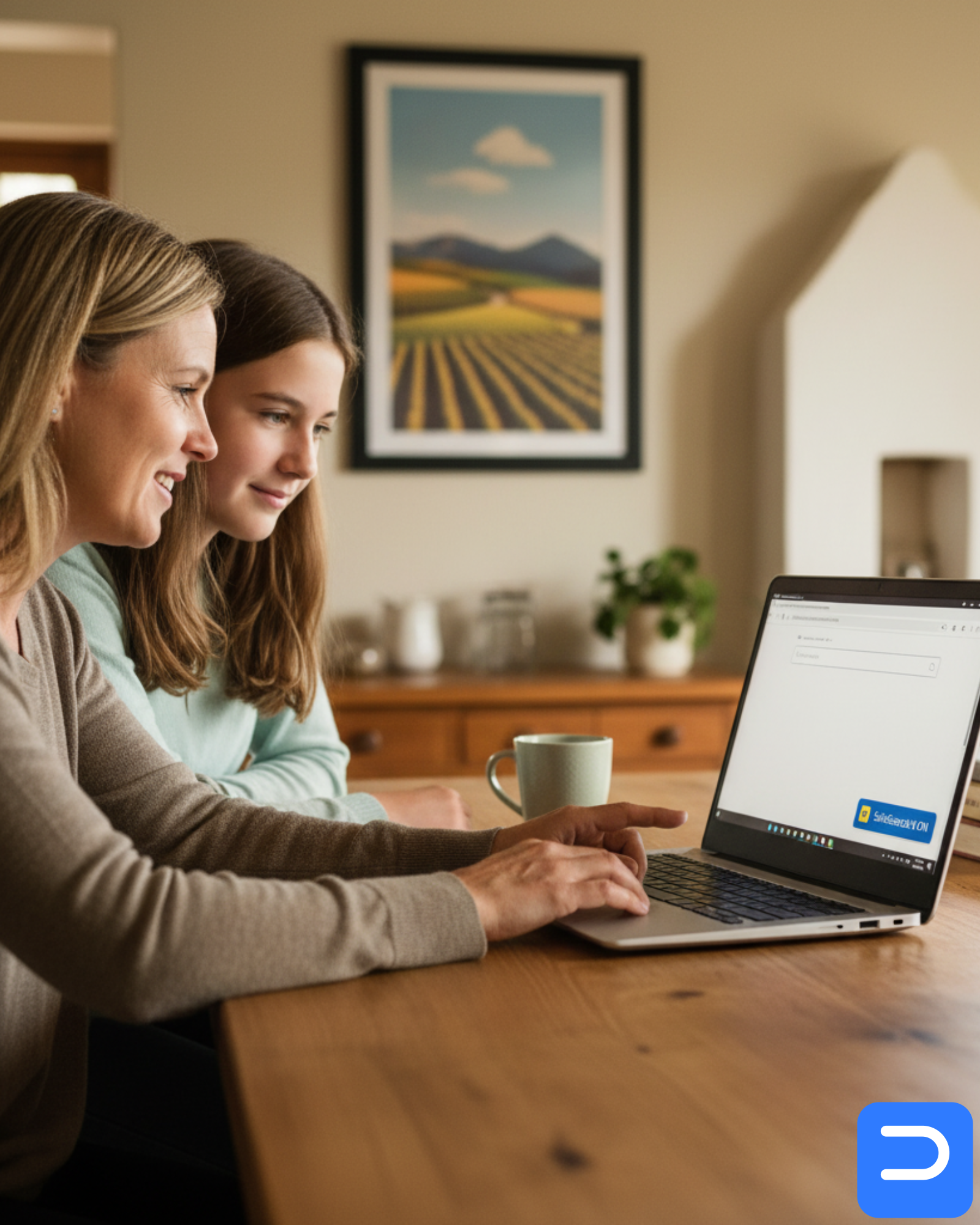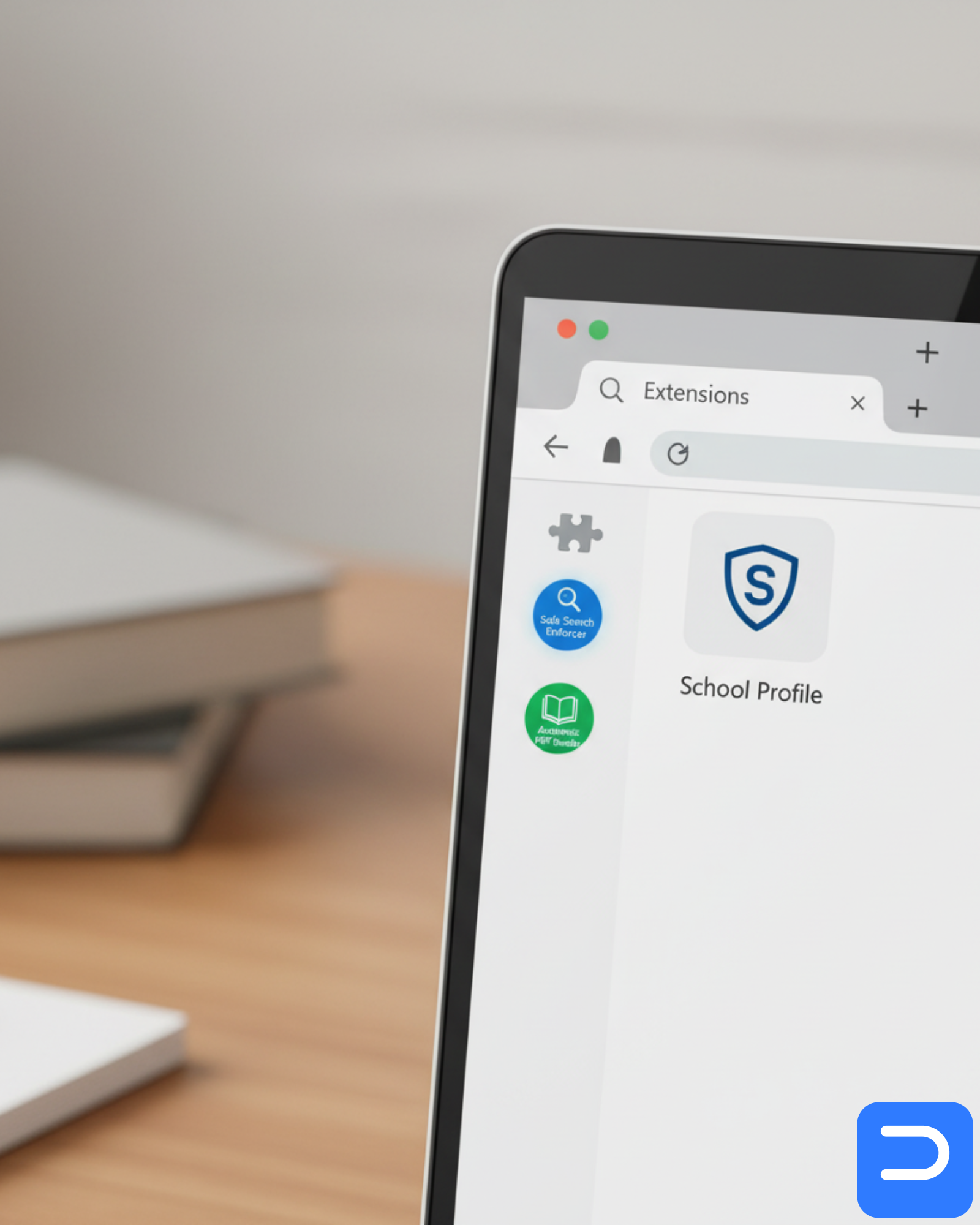Stellenbosch Parents: Protect Your Kids’ Devices with Malware-Free Tech Support
Keep kids’ laptops safe in Stellenbosch—malware signs, kid-friendly browsing tips, and student-friendly clean-and-protect options.
· Digissential Team · 5 min read
malware removal stellenboschkids laptop safety stellenboschprotect devices stellenboschcybersecurity
TL;DR: Most kid-device infections come from drive-by downloads, fake game mods, and malicious extensions. Give children standard accounts, keep updates on, run a proper clean, and lock in browser hygiene. If you need help, our Virus & Malware Removal, Cybersecurity Hardening, or Malware Clean & Protect bundle get you from risky to resilient—fast.

Families in Stellenbosch want two things from their tech: safety and longevity. Between school portals, Roblox/Minecraft mods, and study videos, a lot passes through a child’s browser. One stray click can add adware, coin-miners, or stealers that slow the laptop and risk accounts. This guide shows you how to spot infections, clean safely, and teach good habits—with clear pointers on when to bring in a professional for a deeper, POPIA-aware fix.
What you’ll learn (quick wins)
- A kid-friendly setup: standard accounts, clean browser profiles, and automatic updates.
- The tell-tale signs of malware on laptops used by children and teens.
- A safe clean-up playbook you can try today—without losing schoolwork.
- When to book professional help (rootkits, repeat infections, suspicious prompts), and which service suits you.
Identify the problem: common signs on kids’ laptops
- Pop-ups and redirects even on normal sites.
- New toolbars or extensions suddenly appearing.
- Fans racing and battery draining while the laptop is idle.
- Browser homepage/search swapped to something unfamiliar.
- Friends receive strange messages from your child’s accounts.
- Game launchers or “optimisers” installed from off-brand sites.
If the laptop runs hot and the browser launches with ads, assume adware/extension hijack first.
Safe steps (do this in order)
-
Create a standard child account
- On Windows/macOS, make sure your child isn’t an admin. Parents retain an admin PIN/password.
- This blocks most installers from making deep system changes.
-
Clean the browser
- In Chrome/Edge:
Settings → Reset settings(restore defaults), then review Extensions and remove anything you don’t recognise. - Turn on SafeSearch, Do Not Track, and block pop-ups/third-party cookies for casual browsing.
- Keep a separate school profile synced with only the extensions your teacher recommends.
- In Chrome/Edge:
-
Update before you scan
- Install OS updates and update browsers and stores (Microsoft Store / App Store).
- Many infections rely on old versions; patching first improves removal success.
-
Scan with trusted tools
- Run a reputable malware scan and remove what’s flagged.
- Reboot and scan again; check Start-up apps and Task Manager/Activity Monitor for unknown processes.
-
Harden the device
- Windows: enable SmartScreen, Defender, and Controlled Folder Access for schoolwork directories if compatible.
- macOS: keep Gatekeeper on; allow apps from the App Store and identified developers only.
-
Teach safe clicks
- No “free” cheats/mods from social feeds; stick to official stores or teacher-approved sources.
- Don’t enter passwords in pop-ups; use direct site logins.
- Ask before installing anything new—parents remain the admin.
-
Set a weekly health check
- Five minutes: update, quick scan, battery/temps check, storage tidy-up. Build the habit before exams.
Do-nots (they make things worse)
- Don’t use a factory reset as a first resort—you may wipe school apps and keep the root cause via browser sync.
- Don’t run multiple antivirus engines in real time (conflicts slow the device and miss threats).
- Don’t ignore battery swelling or overheating—shut down and get it checked.
- Don’t save schoolwork only on the Desktop—tie it to OneDrive/Google Drive with version history.
Time & cost expectations in Stellenbosch (student-friendly)
- In-shop malware clean (kids’ devices): usually same/next-day.
- Hardening & parental setup: one session per device to lock in accounts, updates, and browser rules.
- Repeat infections often mean an extension sync or admin rights still in place—book a Malware Clean & Protect bundle to fix root causes.
(We keep student and family pricing straightforward—ask for the current rates when you book.)
When to stop DIY and call Digissential
- Persistent pop-ups/redirects after you’ve reset and rescanned.
- Unknown admin prompts, encryption pop-ups, or payment demands.
- System files missing, blue screens, or the device crashes when the scan starts.
- Account takeovers (email/game platforms) or suspicious sign-ins.
- Privacy concerns where you want a POPIA-aware clean with minimal access to files.
Book help (fast)
Kid-friendly safety checklist (post-clean)
- Standard account for the child; admin PIN stays with the parent.
- Two browser profiles: “School” (minimal) and “Home” (tighter content filters).
- Extensions whitelist: teachers’ tools only; remove the rest.
- Auto-updates on: OS + browser + Store.
- Backups on: Drive/OneDrive with version history.
- Five-minute Friday: update, scan, and talk about any weird pop-ups.
FAQs
Q: Will you see our child’s schoolwork during a clean?
A: We use minimal-access workflows and stick to system areas unless you authorise recovery. A parent can sit in for the whole session.
Q: My child keeps re-infecting the laptop—now what?
A: We’ll reset the browser sync seed, remove bad extensions, lock a standard account, and set permissions so installs need your approval.
Q: Are parental controls necessary?
A: They’re a good complement. We can help you enable platform controls (content filters, screen-time, app limits) without breaking school apps.
Q: The laptop is still slow after cleaning—why?
A: Thermal dust, aging batteries, or startup bloat can throttle performance. Add a tune-up and battery health check at your next visit.
Q: Can you help remotely?
A: Yes—most clean-and-protect work starts remotely, with in-shop follow-up only if hardware issues appear.
Compliance & trust (parents welcome to review)
- We follow a POPIA-aware approach: minimal access, clear consent, secure handling, and child-appropriate safeguards.
- You receive plain-English notes of what we changed and how to keep it safe going forward.
Updated on 2025-09-22.
